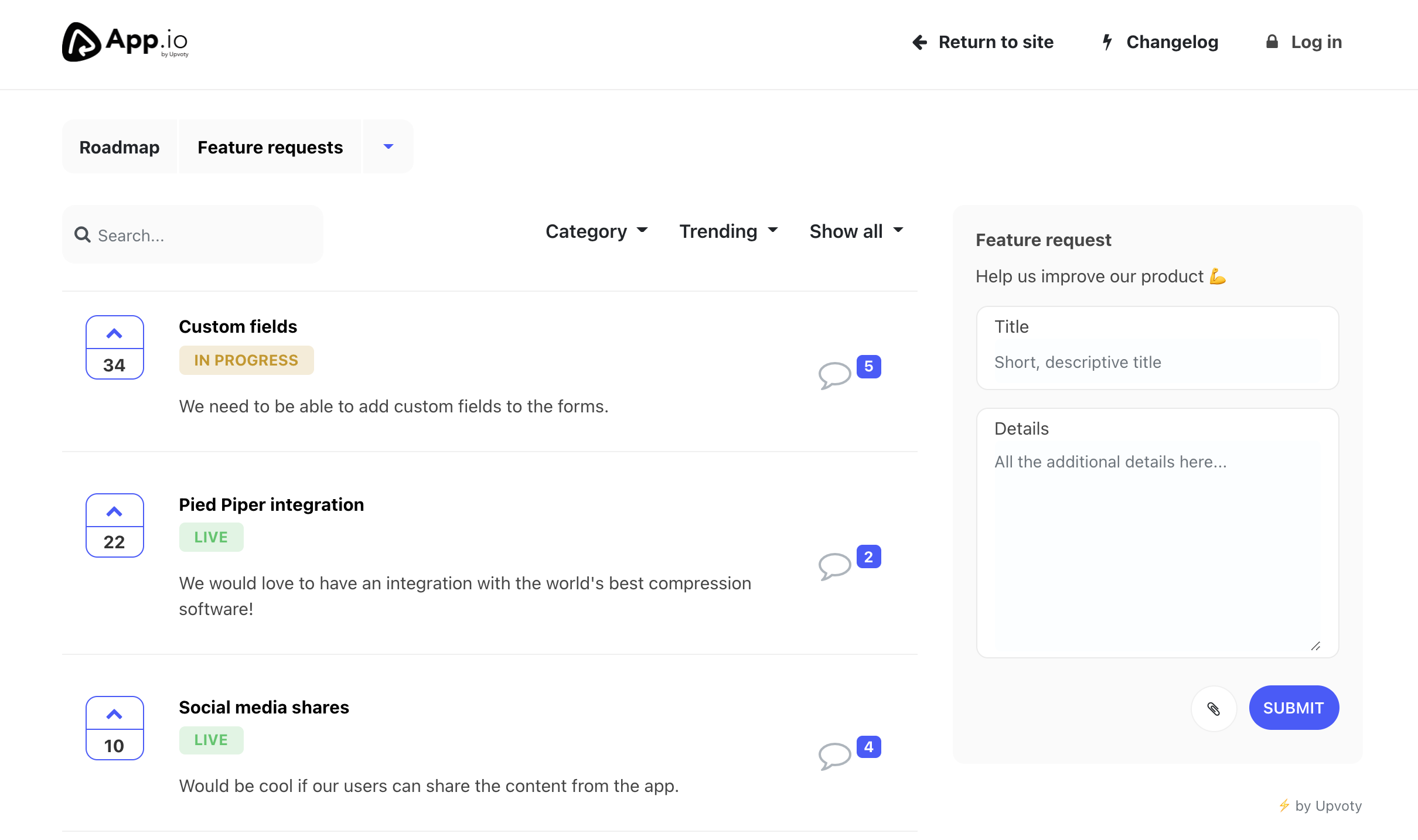How to Get User Feedback Before Your Launch
Engaging early adopters and getting their feedback is crucial for a successful product launch. As Benjamin Humphrey, CEO and co-founder of Dovetail, notes, “Working on a new product? I have one word of advice: talk to your users. Building a new product from scratch is hard (believe me!), but thankfully early adopters are often super willing to give you feedback. As a founder, you should aim to get their feedback as often as possible while you’re in the early stages of development.”The feedback you receive from your customers at this stage of the game is invaluable for figuring out how to better meet their needs. As a result, it's vital to find ways to solicit and integrate customer feedback into development as early on in the process as possible. It might take some time before you feel confident tackling those tricky questions like “What features should we add?” or “How can we improve our UX?” but don't wait too long! If you want to be successful, start soliciting input now.
Early adopters’ feedback
Early adopters’ feedback will help you identify bugs, design flaws, and marketing opportunities for your product. It could be as simple as changing the microcopy of your feature workflow or incorporating an element into your solution that will make people want to buy it. Feedback can help you learn new things about people’s moods, their likes, their dislikes, and what they find engaging about products like yours. And if you don’t feel sure you should share your newly created platform and ask for early feedback before your official launch, here are a few thoughts that will change your mind:
Feedback can help you learn new things about people’s moods, their likes, their dislikes, and what they find engaging about products like yours. And if you don’t feel sure you should share your newly created platform and ask for early feedback before your official launch, here are a few thoughts that will change your mind:
? Get insights from people who understand the technological landscape
The entire idea of getting user feedback before your official launch is to engage early adopters. Who are they? According to Etienne Garbugli, author and co-founder of Get Highlights, “Early adopters have a great understanding of the technology landscape both inside and outside of their organizations. They also have a higher tolerance for risk and a greater ability to see the potential of new technology than most people.”
As Garbugli argues, these people are actively looking for a competitive edge, have the ability to find new uses for technology, seek out and sign up for early trials, are willing to use a product that is not complete, and finally, accept some kind of technological leadership in their company. In other words, these people have the necessary knowledge, interest, and background to provide you valuable and honest feedback.
? Uncover what you didn’t see
Test your product with real people and see how they react and respond. This can help uncover any problems before they become too big for you to deal with. It also allows you to refine your ideas based on what users are telling you in their responses.
? Validate your assumptions and position your product better
By getting feedback from early adopters, you’ll be able to test and validate your assumptions. For example, let’s say you’ve created a webinar platform and your assumption was that adding emoticons to the chat will make sessions more interactive and engaging for attendees. Having that tested by your early adopters will help you review this supposition and analyze if there’s any added value to it.
? Understand how people will use your product
Finally, by allowing people to access and use your platform before its launch, you will see how these early adopters are interacting with your software and what their actions are. This way, you may discover that some features or buttons are useless and just clutter the product interface.
What’s the right way to get feedback from your early users?
With all this in mind, what’s the right way to get feedback from your early users? How can you extract the most valuable insights from them? To answer these questions, we’ve put together a few steps that you’ll want to consider:
Step 1. Encourage people to leave feedback at the end of your demo
If you’re in the early stages of product development and you’re offering demos to early adopters, make sure to capture their feedback on the spot. After finishing the demo, make sure to ask your potential customer or user to share their first impressions, suggestions, and remarks. That’s a great way of building a conversation about your product, understanding people’s first opinions of your product, seeing how they can use it to overcome a challenge, and discovering what’s missing. You can even prepare a few questions to ask your potential customers during your demo sessions. Also, don’t forget to record any feedback (with their permission, obviously). You may want to re-watch it and make sure you didn’t miss any valuable insights.
That’s a great way of building a conversation about your product, understanding people’s first opinions of your product, seeing how they can use it to overcome a challenge, and discovering what’s missing. You can even prepare a few questions to ask your potential customers during your demo sessions. Also, don’t forget to record any feedback (with their permission, obviously). You may want to re-watch it and make sure you didn’t miss any valuable insights.
Step 2. Send segmented email drip campaigns that include surveys
According to Sam Dickie, Lead Product Manager at ucreate.it, to capture early feedback, you need to build an email list. To do that, though, you need to create a registration call to action (CTA) that offers multiple options to help you segment early adopters.In the example offered by Dickie, the segmentation is based on three groups: testers looking for awesome products, makers looking for some user testers, and people who just want to follow the journey.As Dickie argues, “Segmenting your mailing list is key. Generic content isn’t going to drive clickthroughs and generate the feedback you need.”The next step is to send personalized email campaigns to different user groups. This will get people to open the emails and actually pay attention to them. One of the messages you send should include a personalized survey that will help you collect feedback from your users.Regarding the user feedback survey, according to Founder Institute, you have to consider the following best practices:
- Keep the surveys short, between 5 and 10 questions.
- Add relevant questions only. Every question should serve a purpose, to avoid wasting people’s time.
- Use open-ended questions to obtain accurate information from your users. Also, use questions with multiple choice answers to get quantitative data you’ll be able to work with.
Since some people won’t answer your survey, you’ll want to re-send it with a different email or follow up on the existing message, reminding them how valuable their opinion is to your product’s development.
Step 3. Build a feedback option into your SaaS product (Upvoty)
Make it easy for your early adopters to leave their comments or feedback. Regardless of what you do, choose a user feedback platform that’s friendly and intuitive. This way you’ll make sure that your customers can leave suggestions without any disruption to their user experience. With a feedback tool like Upvoty, you can rest assured that your early adopters will enjoy leaving their feedback and actively contributing to your platform development.
Regardless of what you do, choose a user feedback platform that’s friendly and intuitive. This way you’ll make sure that your customers can leave suggestions without any disruption to their user experience. With a feedback tool like Upvoty, you can rest assured that your early adopters will enjoy leaving their feedback and actively contributing to your platform development.
Step 4. Create a public forum for your early adopters
Whether it’s a Slack channel for early adopters or a forum built via Circle, make the feedback and the conversations public. For example, as the Dovetail CEO, Benjamin Humphrey, explains, “We have a public Slack community and welcome all of our users to join via links in the welcome email, on our website, and in-product. This has been a fantastic way for us to engage with users, get to know them, and of course, get great feedback.”You see, when your early adopters see other people leaving comments and feedback via your community or forum channel, they’ll be more eager to engage in conversations, analyze their product experience, and offer valuable insights. Plus, by making these interactions public, you’ll show your transparency as a brand, along with providing a real peer-built knowledge base for future leads and customers.
Step 5. Jump on quick calls with your early adopters
You’ll find that many of your early adopters will be vocal about flaws in your product or service and some will even demand features you hadn’t considered. To get an unbiased perspective on what needs improvement, there’s nothing more powerful than scheduling a quick meeting with people who have used your product for a while and asking them for their feedback. Prepare well for each meeting, come up with some questions, and make sure to get all the data you need. But also try to really listen to your users, and build a conversation with them by expanding the topics you consider interesting.
To get an unbiased perspective on what needs improvement, there’s nothing more powerful than scheduling a quick meeting with people who have used your product for a while and asking them for their feedback. Prepare well for each meeting, come up with some questions, and make sure to get all the data you need. But also try to really listen to your users, and build a conversation with them by expanding the topics you consider interesting.
Final thoughts
Crowd wisdom is a powerful thing, especially when you’re preparing your product for an official launch. So instead of spending months on building something final, try to ship your product even if it’s not perfect, get a few early adopters on board, have them use your platform, then ask for their feedback. This way you’ll discover things you’ve never thought about, improve your product, and gain significant confidence when you launch it to a wider public.

